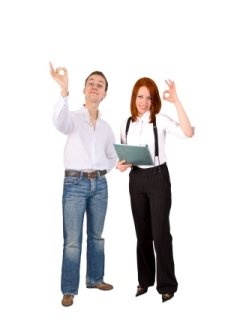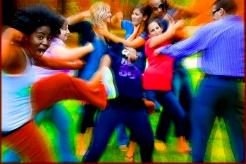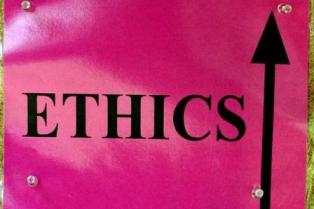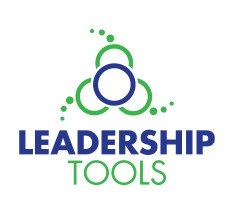Group Facilitation
Tools of facilitation for you to design and manage a process that helps a group accomplish its work while minimizing problems within the group.

Donna Rae Scheffert is a facilitator, trainer, and strategic planner. She brings experience from over thirty years working with high performing groups. Sometimes conflict management is part of the solution for groups to make progress.
Donna Rae Scheffert, President, Leadership Tools, a U.S. based consulting firm. She is a retired Leadership Development Specialist from the University of Minnesota Extension. She spent over 20 years creating leadership information, tools and training. She is the owner of online-leadership-tools.com
Facilitation 101
When you accept the role of facilitator you often juggle many things. These include: planning, process or agenda, group dynamics, personalities, conflict, power struggles, time constraints, follow-up, and more.
The dictionary defines facilitate as "to free from difficulties or obstacles; make easier, aid, assist." That is the role of the facilitator - to design and manage a process that helps a group accomplish its work while minimizing problems within the group.
There are several stages of facilitation. These include pre-work, opening the meeting or event, facilitating the meeting, closing the meeting, and following up with planners.
The facilitator is a neutral guide who takes an active role in guiding the process while adhering to principles of effective facilitation showing no vested interest in the outcome. A good facilitator guides the process.
Pre-Planning
The success of a facilitation meeting begins with good planning before the group gathers. The pre-planning will help to clarify roles and expectations including that of the facilitator.
Planning is needed to develop the agenda, communicate with participants, make room arrangements, and gather supplies and equipment. Facilitated meetings include determining the group process to follow, and possibly having a couple of alternatives in case flexibility is required.

Know the room. This may mean going to look at the space ahead of time, or at least, arriving very early so you can make sure the seating arrangement is appropriate for the room, the size of the group, and the work that is to be accomplished.
There are many different room arrangements; select the one that will create an atmosphere of openness and encourage group involvement.
Develop a checklist to review the needed equipment for the meeting. Resources may include name tags, flipcharts, AV equipment, markers and tape, table tents, etc. Have extra supplies on hand.
The facilitator may not do these tasks themselves. However, they should be sure that they are taken care of so that the environment is set for a successful meeting.
Group Dynamics
From the beginning of the meeting led by a facilitator it is important to establish a solid foundation for the way the group members will work together.
Participants need to know what is going to happen, feel they are in a safe environment, and have an initial openness to others in order to fully participate in the meeting. They need to accept the role of the facilitator and be engaged actively in the work of the group.

Guidelines for Facilitator
• Make sure participants are physically comfortable.
• Share meeting ground rules with participants.
• Ask you to speak up if you are being quiet, and may ask you to be quiet if you go on too long.
• Act as the neutral person - refrain from giving a personal opinion.
• Maintain a positive group atmosphere.
What Facilitators Need to Avoid
• Lengthy comments
• Giving verbal rewards for good answers, e.g., I really like that idea
• Asking leading questions, e.g., Who should be in charge? How do you get the government to do it?
• Asking loaded questions using value words such as good, pretty, evident
• Using a "know-it-all" tone of voice
Ground Rules for Group
• No right/wrong answers
• Be respectful
• OK to disagree
• Everyone participates in discussion
• Everyone helps moderator stay on track
Dealing with Group Conflict

Conflict in groups is a normal part of the group process. Disagreements and differing points of view have the potential to add important information, broaden the perspectives of the group, and serve as a positive contribution to the work. Although the outcome may be positive, there will be some stress and discomfort.
Typically concerns and disagreements will arise in one of the following areas:
1) the process the group is using,
2) the content being discussed, or
3) the people (personalities) involved in the discussion.
As a facilitator, your role is to help provide a safe environment where disagreement and conflict can surface and be put to use as a positive and creative force. Facilitators can learn to recognize and handle common problem meeting behaviors. These behaviors may include the long-winded dominator, the side conversationalist, or the quiet participant. These behaviors are considered to be problems because they distract from the agenda and disrupt the attention of the group.
It can be helpful for a facilitator to think about why someone is expressing a problem meeting behavior. For example, the long-winded dominator may be overly prepared to speak on a point, or the quiet participant may be waiting to be asked to contribute. Understanding the "why" of behavior is helpful as a facilitator considers "what to do."

Visible and Invisible Diversity
A facilitator needs to be aware of the visible and invisible diversity within groups they work with. Cultural, socioeconomic, ethnic, racial, gender and age differences are some aspects of diversity to be aware of in groups.
One lead role of the facilitator is to monitor interactions in a manner that values differences. Sometimes a reminder to use “I” statements will help a person share their views without generalizing them.
Facilitation of a discussion is about building on diversity.
Power Dynamics
The power dynamics within a group help determine how people perceive their value to the group. A facilitator can help ensure that group members feel valued and significant.
There should be a relatively equal sense of power for all participants. It is important that participants perceive that the process is fair and just.
One source of power is the relationship between group members and the facilitator. If certain members are acknowledged more by the facilitator, dominate the time, or state their views without being open to discussion, they are using more power at the expense of other members.
The sensitive facilitator can be aware of and manage these power dynamics. Another source of power is the relationships between people within the group. If a boss and employee are in a meeting, the employee may not state an opinion for fear of retribution.

Code of Ethics
In a public setting, facilitators must adhere to ethical principles and values. If they do not uphold ethical expectations, they undermine their role and potential success of their own future as a facilitator and they damage the effectiveness of others who serve as facilitators.
The code of ethics for facilitators includes: honesty, integrity, promise-keeping, fairness, concern for others, respect for others, responsible citizenship, pursuit of excellence, personal accountability, loyalty, public trust, independent objective judgment, and public accountability.
Newcomers
Recognize that the newcomers, or those who perceive themselves as different from the rest of the group, may feel at a disadvantage or feel excluded within the group.
Sometimes this is unintentional, such as when language that is full of jargon is used.
Sometimes behavior is intentional, such as when certain individuals within the group are excluded during refreshment breaks.
If you see intentional or unintentional behavior that is biased, intervene as subtly or forcefully. The facilitator must provide an inclusive environment for all and if they do not neither will the group.

Comments and Jokes
If comments or jokes that have an ethic or gender bias are made, tell the group that this type of communication is offensive and will not be allowed in this group meeting. Facilitation includes holding to boundaries to protect the safety and dignity of participants.
Facilitators should refrain from using visuals, jokes, or quotations of poor taste.
Need Leadership Tools?

For additional resources for facilitation
Facilitation. Training. Strategic Planning.
Donna Rae Scheffert
809 Mayflower Ct.
Northfield, MN 55057
612.360.4484 (telephone) leadershiptools@charter.net (e-mail)
